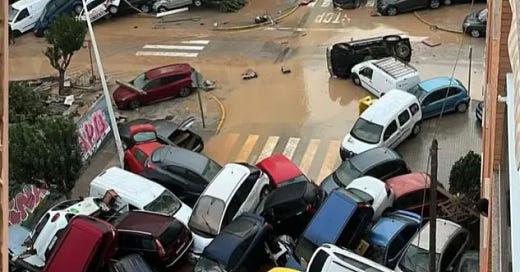Pedaling Through Crisis: How Bike Kitchens Can Support In Disaster Relief
Perspectives | Bike Kitchens | World
At the beginning of November 2024, one day saw a year's worth of rainfall in Valencia, Spain (Kent & Benjamin, 2024). This disaster left thousands displaced and resulted in 200 deaths (Kent & Benjamin, 2024). Only two weeks later, disaster struck in Andalusia. In one hour, a month’s worth of rainfall deluged Malaga (Chinchar et al, 2024). The country’s meteorological agency, AEMet, reported approximately 100 millimeters of rain on Wednesday, November 13 - 100 liters of water over every square meter - with 78 millimeters falling within just one hour (Chinchar et al., 2024).
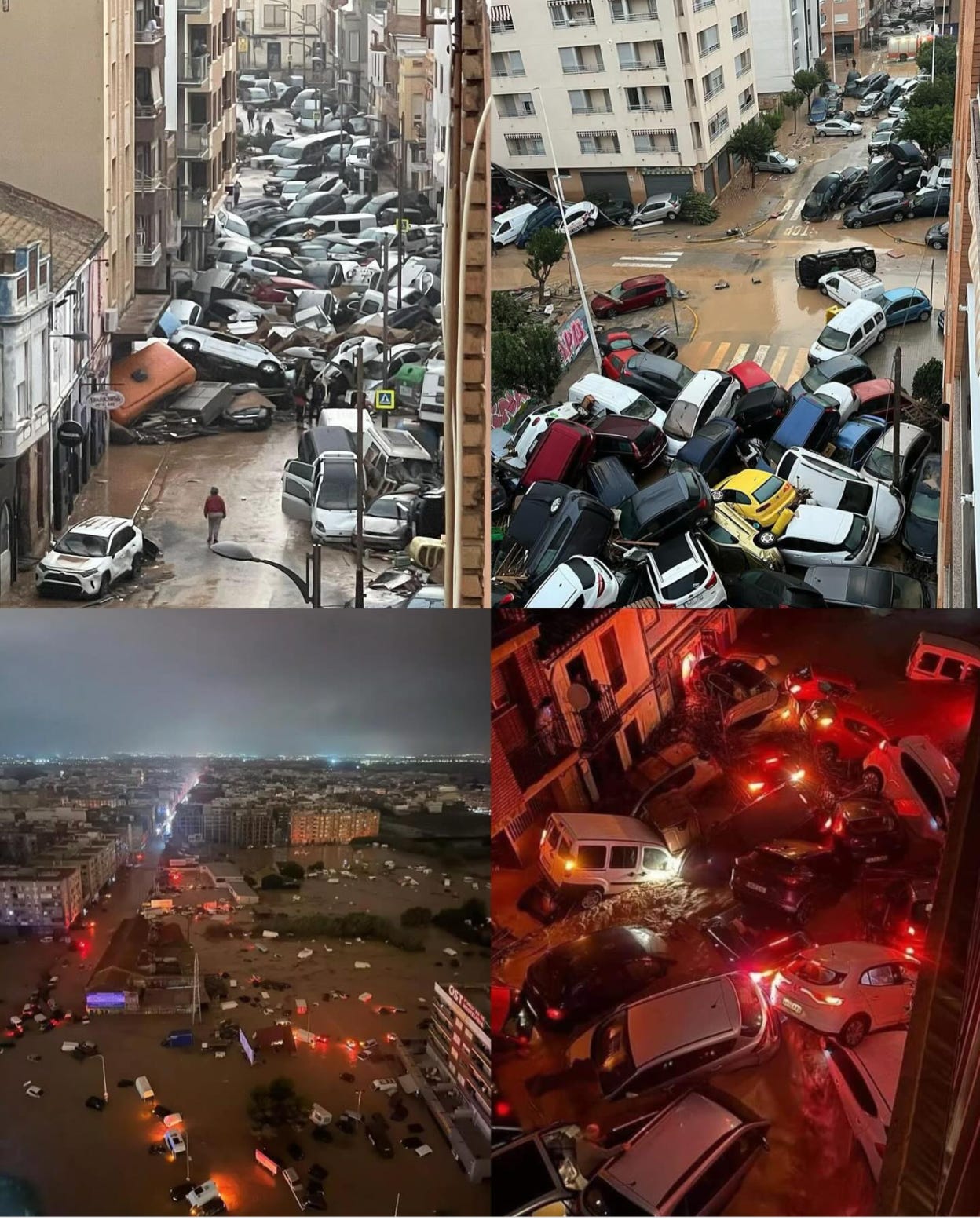
Michael Tahmoressi explores how bike kitchens could double as emergency aid hubs during natural disasters, drawing inspiration from recent events in Spain and the U.S. He’s pinpointed five unique ways these community spaces can make a difference in crisis situations, thanks to their one-of-a-kind setup. Dive into his insights and let us know in the comments - how else could bike kitchens or similar spaces step up during challenging times?
Rethinking mobility in disaster response
Particularly striking in the immediate aftermath of the Spanish floods were the images of cars piled up, clogging streets and hindering disaster response efforts. In an Instagram post, Carlos Moreno, the renowned Colombian-born urban planner at the origin of the 15-minute city model, highlighted the link between disaster challenges and the dominance of cars in urban areas. “We need to change the shape of our cities so that we can provide local access to essential services and reduce our carbon footprint by getting around on foot or by bike”, the professor indicated” (Moreno, 2024).
A crisis like a natural disaster is terrible, but the resulting chaos and need for reconstruction create a liminal space to alter transportation behaviors at the individual and societal levels (Glaser & Krizek, 2021). In the wake of the flood, a group of concerned Valencian cyclists gathered to organize the delivery of goods to people in the disaster zone. A LinkedIn post by Rafa Vidiella Bellon, CEO of nonprofit Cycloferias, pleaded for supplies and aid to be sent to cyclists aiding the relief efforts and included a short video of the cyclists making aid runs biking through dirty water to deliver their cargo.
Upon witnessing resilient cyclists operating in 10 centimeters of water on expensive gravel and mountain bikes, it became clear to me that bike kitchens could play a crucial role in disaster relief efforts. My personal experience in bike kitchens has made me deeply aware of bicycle wear and tear, particularly in challenging conditions like the year-round wet weather in the Netherlands.
Five ways Bike Kitchens can support disaster relief
I have identified 5 ways through which bike kitchens can contribute to disaster relief efforts. First, mobile bike maintenance to aid cycling aid workers and affected populations who may rely on cycling as their only viable form of transportation in the aftermath of a disaster. Second, bicycle kitchens can function as distribution points for goods or services. Third, they can help provide bikes for people affected by the disaster who do not have transport. Fourth, they can build easy-to-manufacture bicycle machines to replace electricity power machines. Finally, bike kitchens can act as community-oriented organizations, fostering social cohesion, mutual-support, and resilience among affected communities.
Let’s have a closer look at each of those:
Bike kitchens as Mobile bike repair - First, bike kitchens can provide workshops to teach people how to maintain their bikes as a preventive measure before disaster strikes. In the aftermath of a disaster, mobile bike maintenance could take two forms: handing out tire patching kits to deal with punctures and field mechanic stations to clean bikes and providing more extensive services. A mustering station with Bakfietsen could be set up on the outer perimeter of the disaster area. Field mechanics could then ride bikes throughout the area, proactively searching for people in need of bicycle repairs.
Community spaces for the distribution of vital aid - If the bicycle kitchen's physical space is not damaged, it can serve as a point to consolidate and prepare goods to be delivered to people in disaster areas by bicycle. During the Covid pandemic, the grease pit and a bicycle kitchen in Minneapolis operated a giveaway space for essential items like diapers, food, and cleaning products that were hard to find.
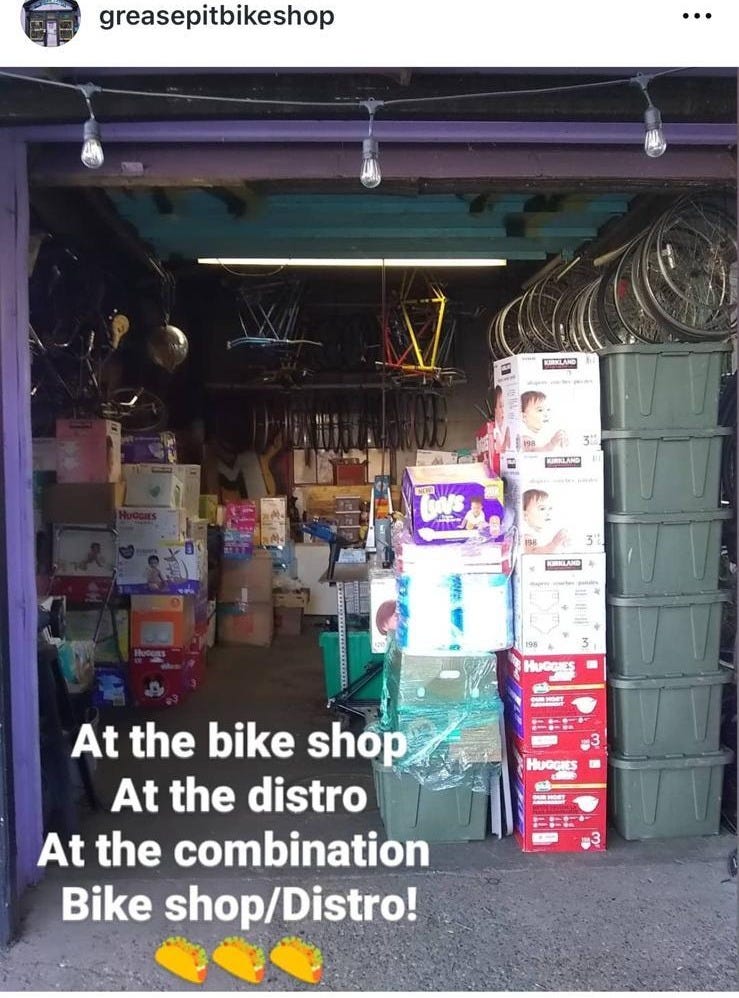
Bike kitchens can serve as innovative spaces for developing and implementing new procedures for distributing aid. An example from the United States is the American Solidarity Organization Disaster Relief trials, which test the capabilities of Cargo Bike in providing aid. They hold a yearly race that challenges participants to load up a cargo bike and do a trial aid run. Each year, the race picks a specific neighborhood with an environmental vulnerability. The organizers views this race as an opportunity to test out routing supplies from existing county distribution sites into the neighborhoods where the race is conducted (Cobb, 2024).
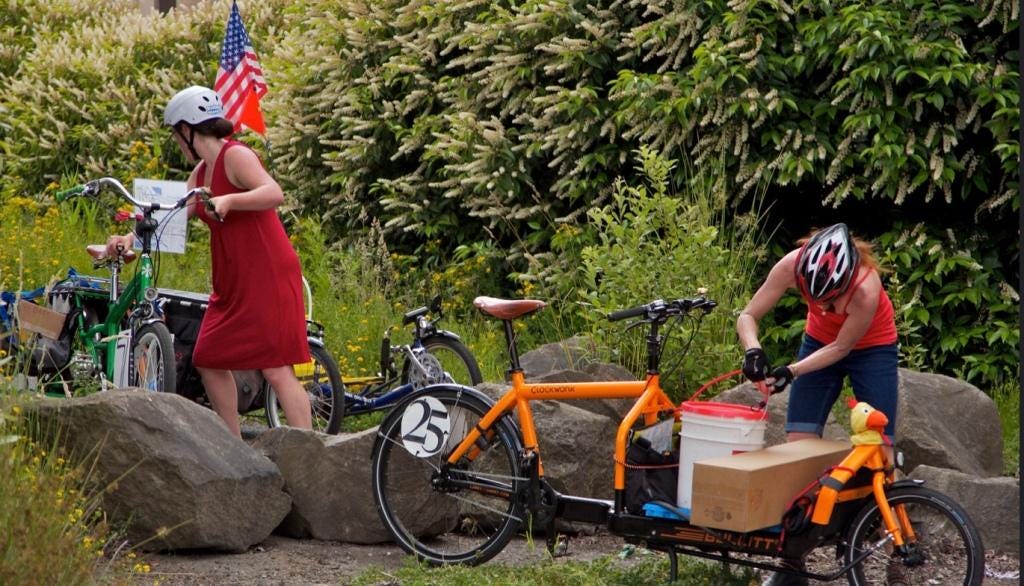
Recycling unused bikes for increasing accessibility - Volunteers at the bike kitchen could help assemble the bikes for a giveaway and also help new cyclists to do repairs. After the flood, the streets were not accessible by car. A bike giveaway called “Bikes against Mud” was organized in Valencia. This action gave bikes to residents affected by the flooding. The bike giveaway is organized DoYouBike, a Valencian company alongside the Alberto Contador Foundation, Valencia Cáritas, activist Juan Dual, and the local stores TodoBici and Vuelta de Tuerca. One thousand six hundred requests were made, and around 300 bicycles will be distributed (Pastor, 2024).
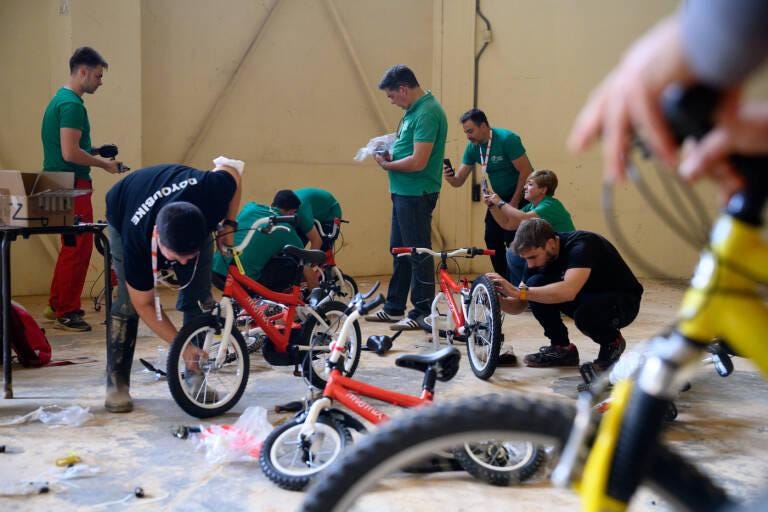
Manufacturing maquinas to support relief efforts - Disaster relief efforts require to think creatively and work with limited materials. Bike kitchen community members enjoy tinkering and problem-solving. These communities could offer essential services to their members during power outages by constructing machines. Bici máquinas are basic devices powered by a bicycle drivetrain system (crank, chain, and sprocket/cassette). There are examples of these machines on YouTube. Bici machines could replace electricity-powered tools in the aftermath of a disaster. The Bici Lavadora utilizes a bike as a motor and a simple drum to power the spin cycle.
Community-centered mutual aid - The final way a bicycle kitchen could be a valuable resource for a city experiencing a natural disaster is the community connected to the kitchen. Both bike kitchens I have researched have had tight-knit communities that know how to work together. Access to a bike kitchen could provide people with human contact and a sense of normalcy after a disaster.
To sum it up, this article is a thought experiment exploring how bicycle kitchens, as a form of social infrastructure, could play a crucial role in supporting disaster relief efforts. Bike kitchens offer people a meaningful way to foster solidarity within their community. However, bike kitchens are still marginalized spaces where bike repair can be undertaken. For the concept I’ve outlined in this piece to be fully realized, it requires the support and adoption of the bike kitchen model by policymakers and change-makers in society. Cities, provinces, and countries could benefit from incentivising the creation of solidarity-driven communities like bike kitchens. By coordinating efforts at higher levels of government, the capacity of bicycle kitchens to make a significant impact in disaster relief could be greatly expanded.
Written by Michael Tahmoressi, PhD Fellow at Urban Cycling Institute
Interested in sharing your perspective? Send us a pitch at media@urbancyclinginstitute.org
References
Batterybury, S & Vandermeesch, I.(2016).Bicycle justice: community bicycle workshops and "invisible cyclists" in Brussels. In Bicycle justice and urban transformation. Editors: a.golub, Hoffmann, M.L Lugo,A.E., Sandoval, L.F. Routledge (pp.189-210) DOI:10.4324/9781315668840-14
Bellon, R.V. (2024). linked in post accessed via (13) Post | LinkedIn
Chincar et al. (2024). Thousands evacuated as parts of Spain hit with nearly a month’s rainfall in one hour. Cnn accessed online via https://edition.cnn.com/2024/11/13/europe/spain-rain-thousands-evacuated-malaga-intl-latam/index.html
Cobb, M. (2022) Disaster Relief Trials [online] Accessible form: About | Disaster Relief Trials.
Glaser, M. & Krizek, K.J. (2021). Can street-focused emergency response measures trigger a transition to new transport systems? Exploring evidence and lessons from 55 US cities. Transport Policy. (103) Pp. 146-155
Grease Pit Collective [@Greasepitcollective]. (2020, July 24). At the bike shop, at the distro, at the combination bike shop/distro [Instagram post]. Instagram link.
Kent L., and Brown B., (2024). Horrific details emerge of how victims died in Spain’s flash floods CNN accessed online via https://edition.cnn.com/2024/11/01/europe/spain-floods-horror-intl/index.html
Moreno, C. [@CarlosMorenoFR]. (2024, October 30). Devastating scenes of piled-up cars in Valencia, Spain, after yesterday’s historic flooding [Instagram post]. Instagram link.
Pastor, E. (2024) “Bikes against the mud”. Valencia plaza accessed online via 'Bikes against the mud' to regain mobility after the Dana: "It's a joy after losing the car" - Valencia Plaza.


